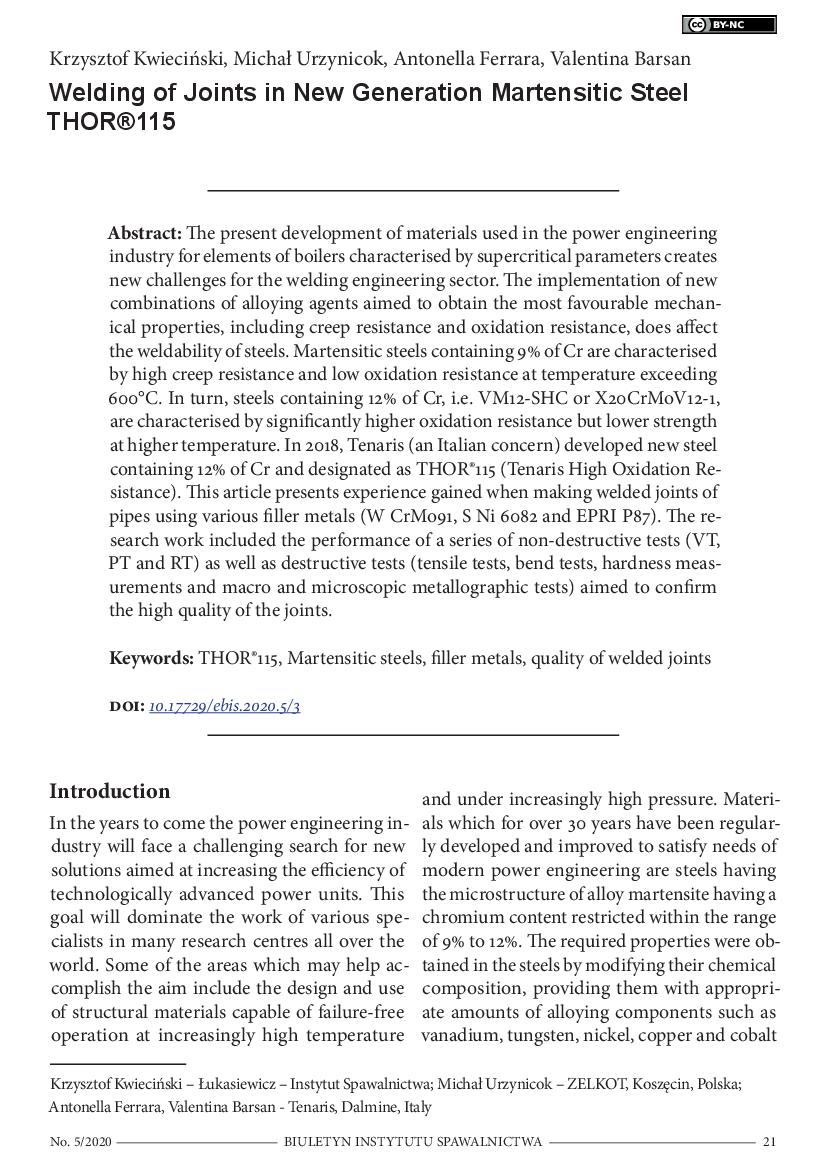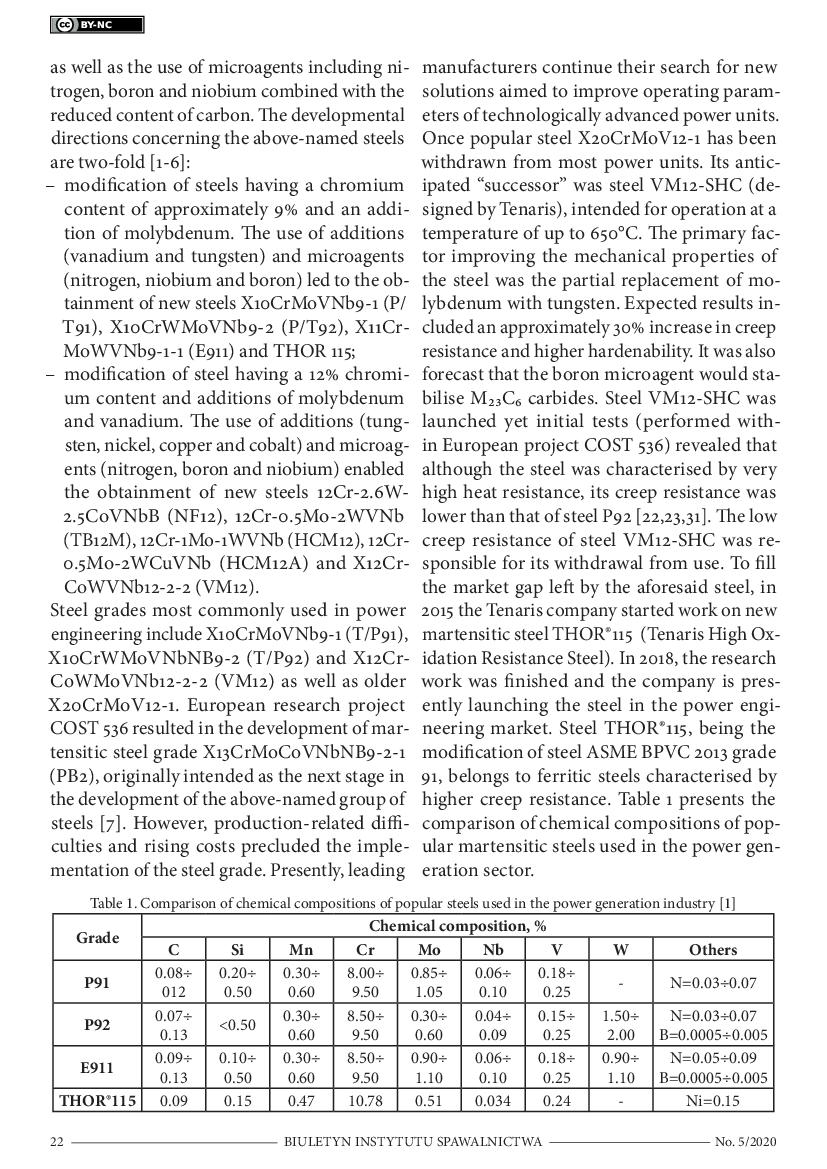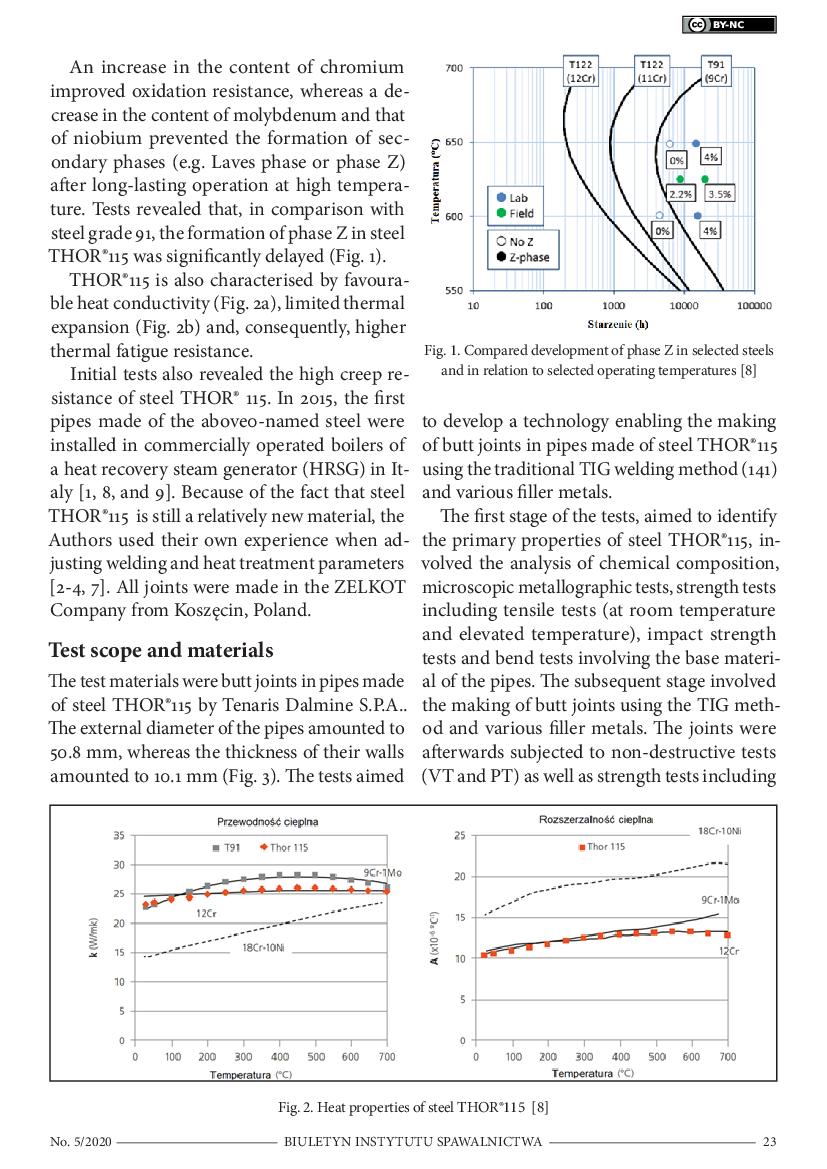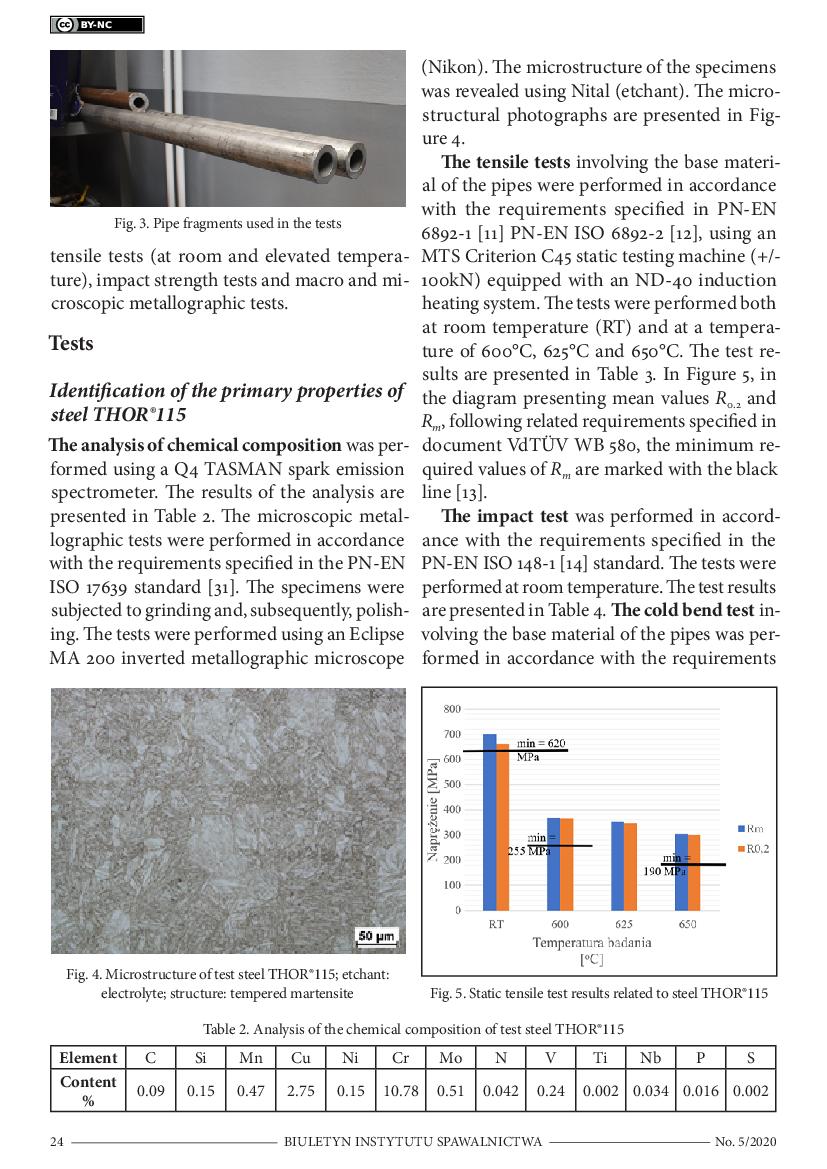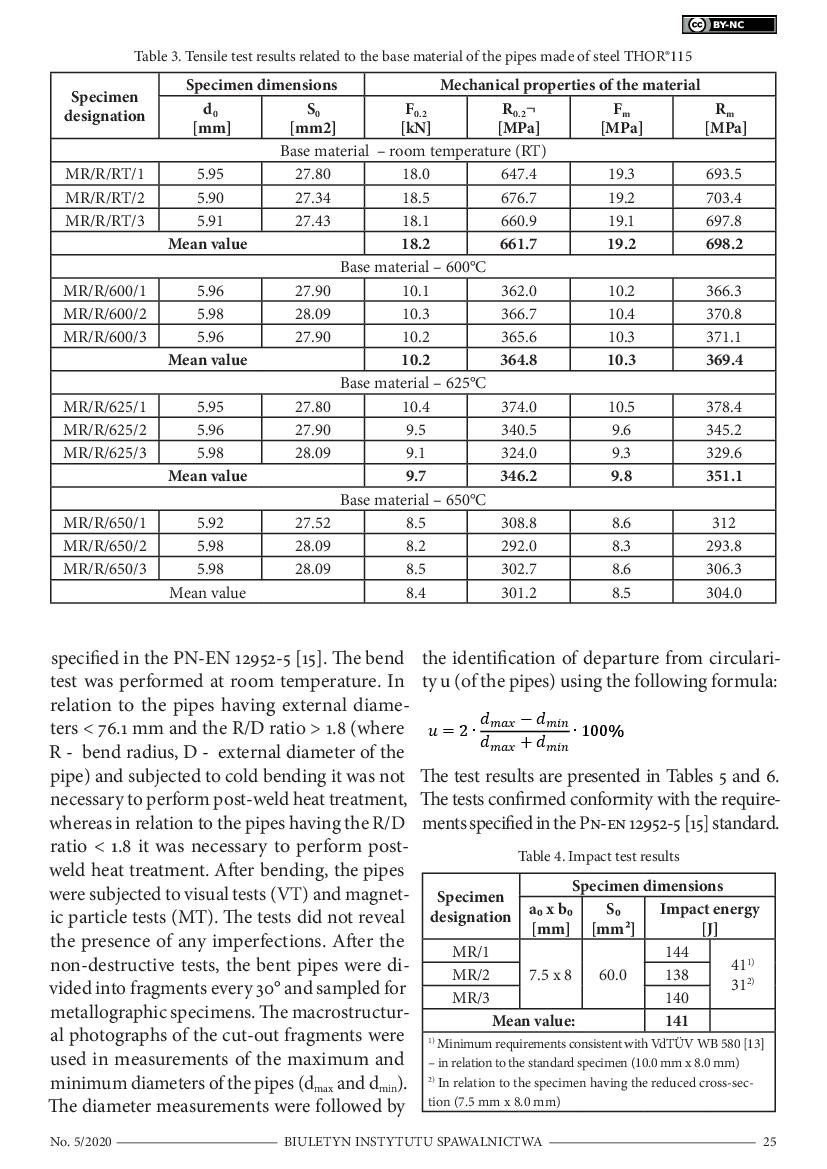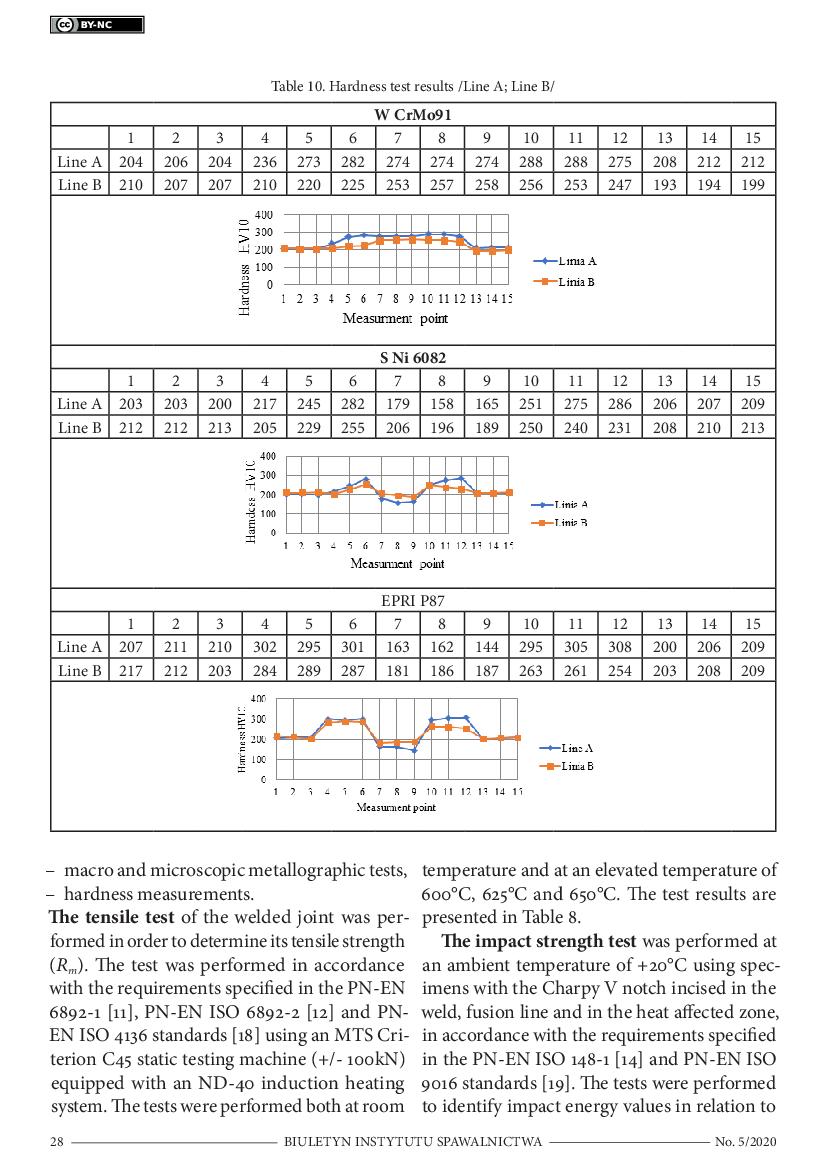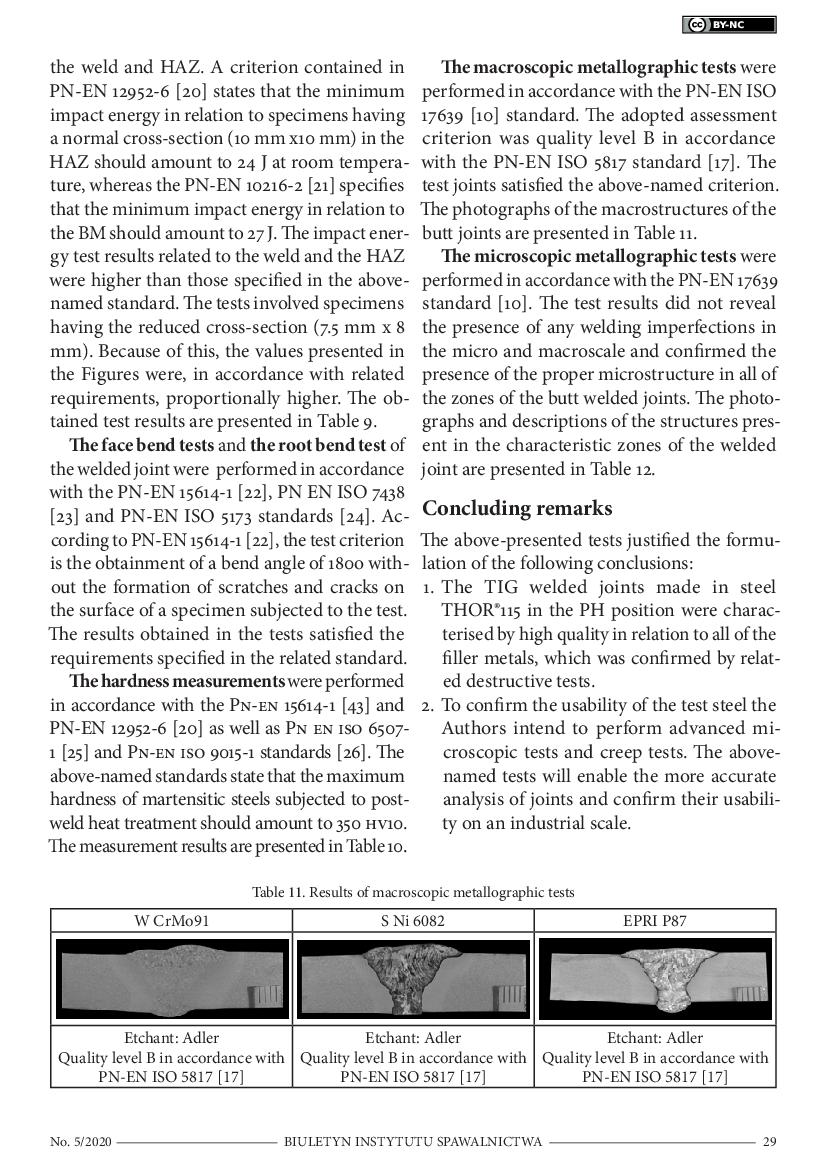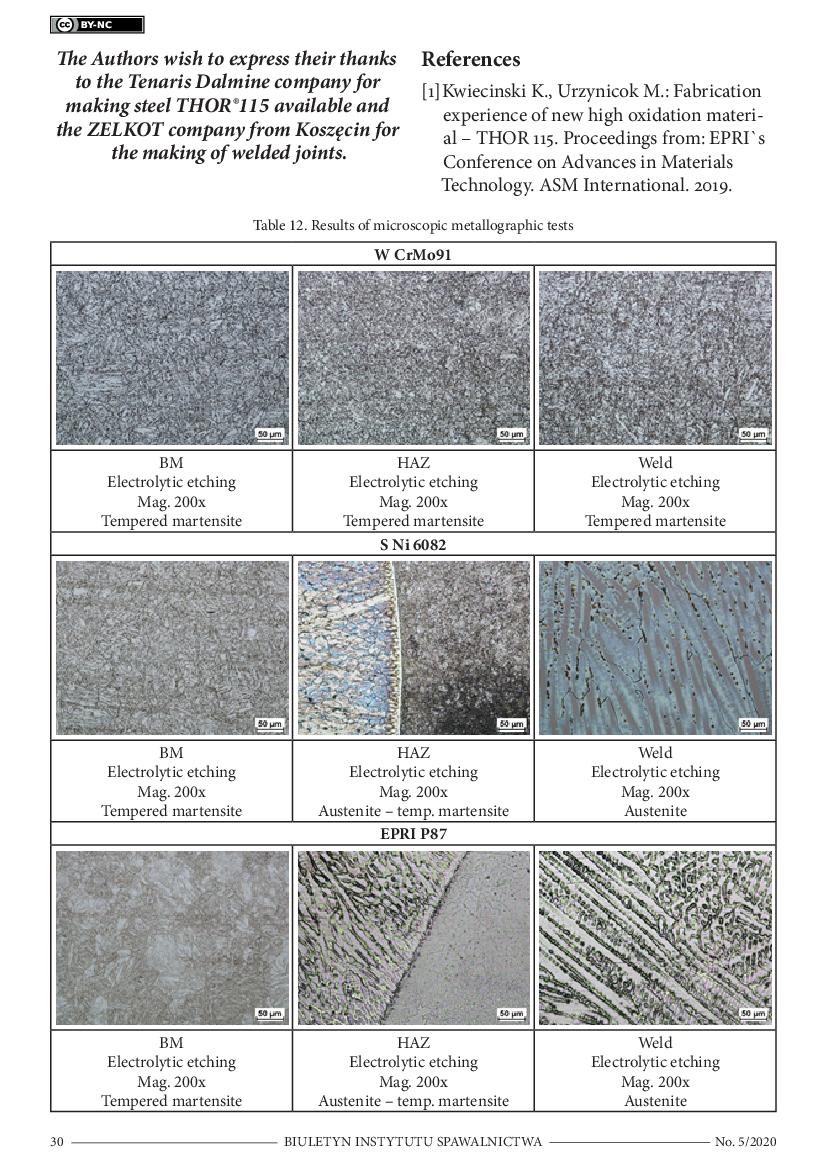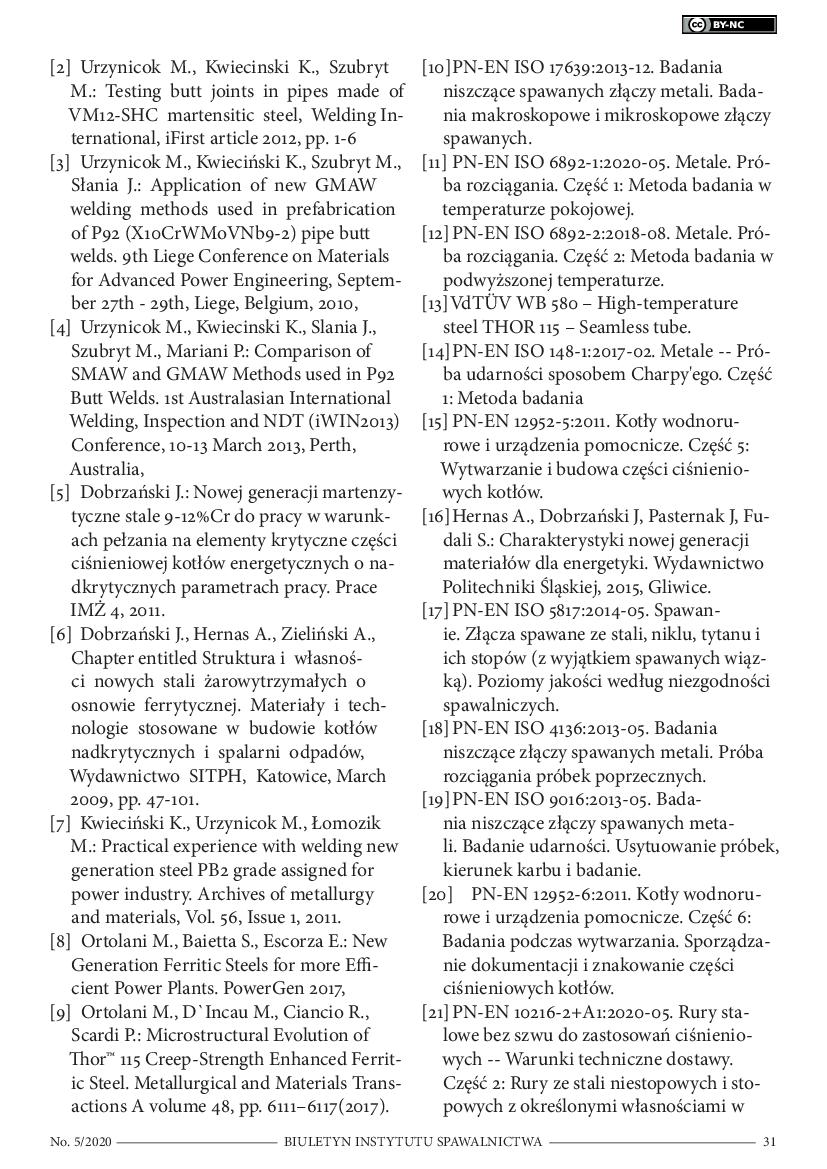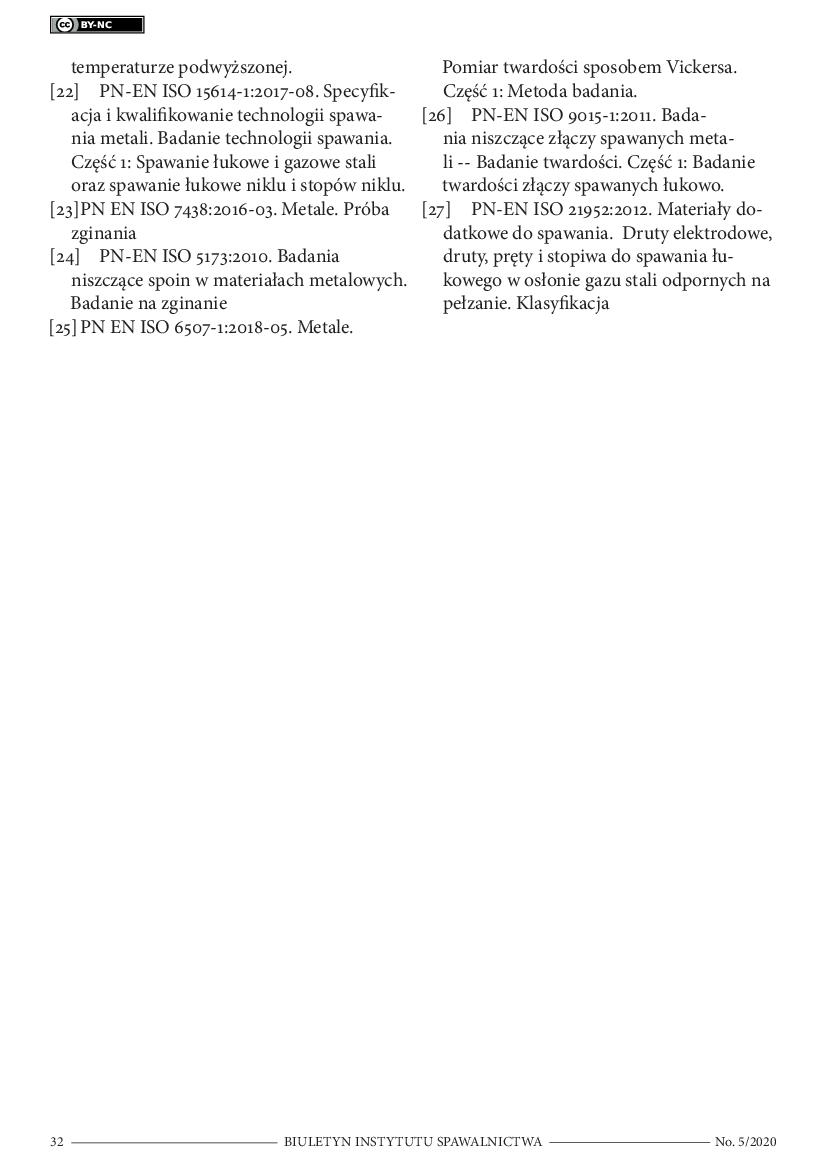Welding of Joints in New Generation Martensitic Steel THOR®115
The present development of materials used in the power engineering industry for elements of boilers characterised by supercritical parameters creates new challenges for the welding engineering sector. The implementation of new combinations of alloying agents aimed to obtain the most favourable mechanical properties, including creep resistance and oxidation resistance, does affect the weldability of steels. Martensitic steels containing 9% of Cr are characterised by high creep resistance and low oxidation resistance at temperature exceeding 600°C. In turn, steels containing 12% of Cr, i.e. VM12-SHC or X20CrMoV12-1, are characterised by significantly higher oxidation resistance but lower strength at higher temperature. In 2018, Tenaris (an Italian concern) developed new steel containing 12% of Cr and designated as THOR®115 (Tenaris High Oxidation Resistance). This article presents experience gained when making welded joints of pipes using various filler metals (W CrMo91, S Ni 6082 and EPRI P87). The research work included the performance of a series of non-destructive tests (VT, PT and RT) as well as destructive tests (tensile tests, bend tests, hardness measurements and macro and microscopic metallographic tests) aimed to confirm the high quality of the joints.
doi: 10.17729/ebis.2020.5/3
 1 / 12
1 / 12
 2 & 3 / 12
2 & 3 / 12
 4 & 5 / 12
4 & 5 / 12
 6 & 7 / 12
6 & 7 / 12
 8 & 9 / 12
8 & 9 / 12
 10 & 11 / 12
10 & 11 / 12 12 / 12
12 / 12


